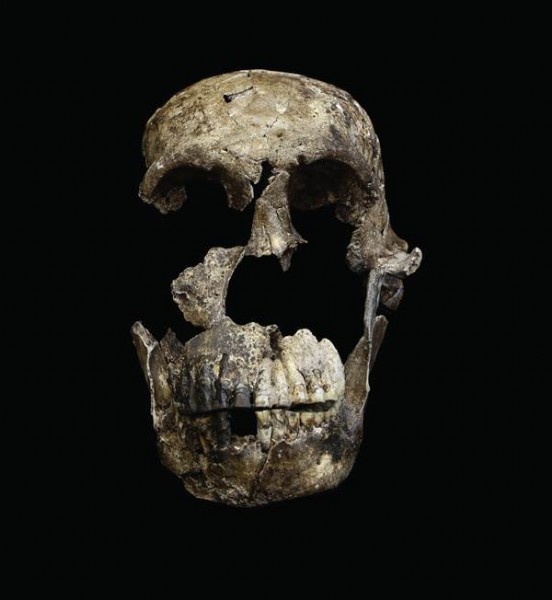
Several years ago scientists in South Africa reported the discovery of the fossil remains of a new species called Homo naledi. As reported in Scientific American, "[Homo naledi] had a curious mix of primitive traits, such as a tiny brain, and modern features, including long legs. They determined it was a capable climber, a long-distance walker, a probable toolmaker." The remains were found in an underground cave system called Rising Star. This past week, Lee R. Berger of the University of Witwatersrand, as well as a group of other researchers, reported in the online journal on the discovery of remains in a separate chamber of the Rising Star cave system, approximately 100 meters from the 2013 first discovery. The original discovery was made in September, 2013 by two recreational cavers who pretty much stumbled upon the original specimens. The second discovery included 131 Homo naledi specimens, mostly the bones of an adult male who has been nicknamed "Neo", meaning "gift" in the local language. What was reported has the potential to shake up many commonly accepted ideas about the evolution of mankind in Africa.
To be certain, the Homo naledi specimens are definitely different than typical Homo sapiens. The researchers reported that they have a more primitive trunk, shoulders, pelvis, and femur than Homo sapiens. On the other hand, the specimens appear to have humanlike adapatations of the hand, wrist, foot, and lower limbs.
The first thing that has caught the attention of many about this find is the estimated age of the remains. The scientists involved with the discovery had two labs independently date the fossils. Both concluded that the remains are between 236,000 and 335,000 years old. That's, of course, pretty old, but not really.
The second reason this find is so interesting is because there is evidence Homo naledi intentionally buried their dead. Other than Homo sapiens, there hasn't been any evidence of a species doing this. If the evidence can be confirmed, it would imply a level of sophistication in Homo naledi not seen in other primitive species.
How did the scientists reach this conclusion? It has to do with the location of the burial site – deep within the cave. The researchers concluded that the remains could only have ended up where they did if intentionally taken there, not by chance.
The third reason Homo naledi might be of particular interest is because there is some evidence that they may have been toolmakers. Nothing definitive at this point, but there appear to be some tantalizing clues. Moreover, the researchers didn't discover any specific evidence of this, merely hints of it. If it turns out that Homo naledi were toolmakers, it could well overturn some widely accepted notions about the role that brain size plays. This is because the Homo naledi specimens showed brain sizes of about 600 cubic centimeters, substantially smaller than the 1400 cubic centimeter sizing of the Homo sapiens brain.
The fourth, and possibly most controversial, reason this is an important discovery is that it may call into question accepted ideas about the role of southern Africa and eastern Africa in the emergence of modern humans. The generally accepted view is that modern humans emerged out of east Africa, but the researchers working on Homo naledi are building arguments that Homo naledi may have given rise to Homo erectus and/or Homo sapiens. Other experts in the field, not involved in the South African discovery, are at somewhat skeptical of these claims. J. Tyler Faith, a paleoecologist at the University of Queensland in Australia, for example, is skeptical of the claims about southern Africa as the center of evolutionary development. He also questions the idea that Homo naledi helped lead to Homo sapiens. He says, "If the dates are correct, then Homo naledi is a classic example of an evolutionary dead end … [Homo naledi] couldn't possibly have given rise to living human populations today."
Berger, the principal researcher, was born in Kansas and grew up in Georgia, but now makes South Africa his home. He has worked closely with National Geographic. He apparently is also somewhat unusual in that he is attempting to make his research projects "open source", somewhat akin to "open source" software development projects wherein the research is made openly available for others to see, comment upon, and make contributions. The number of co-authors in this week's paper attests to that idea.
This week's report shows that new discoveries are still being made around the world, helping to shape and refine our understanding of the emergence of our species, Homo sapiens.